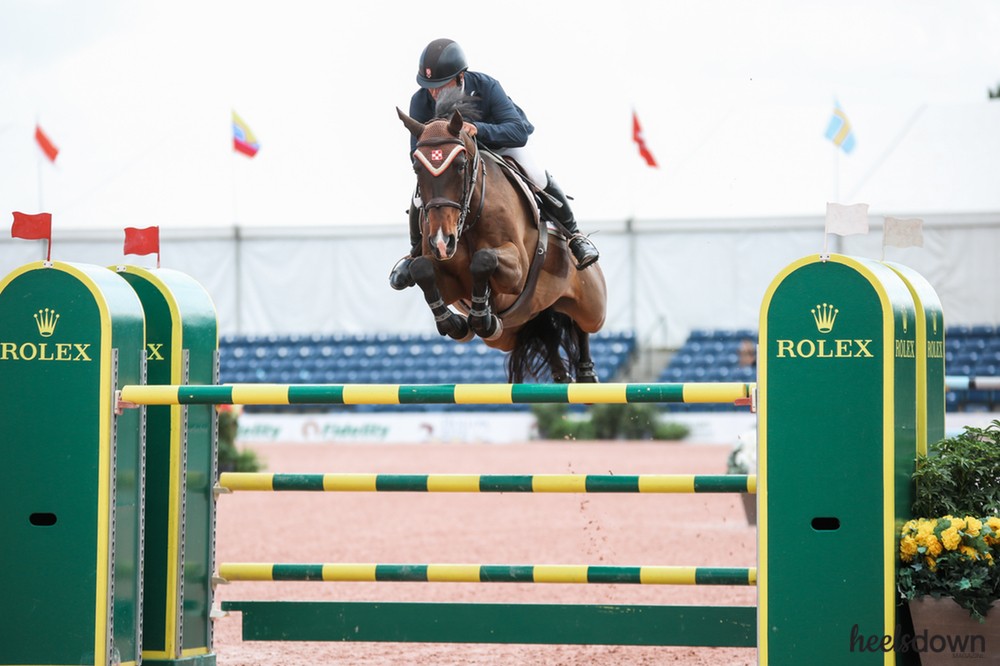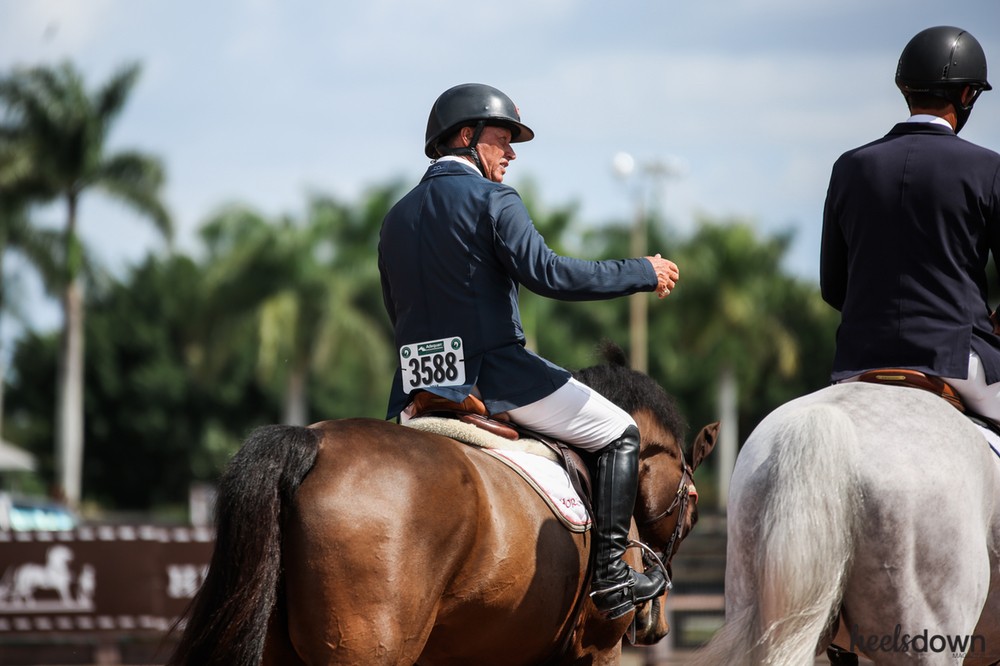Todd Minikus’ Five Commandments For Show Jumping

Veteran show jumper Todd Minikus has ridden too many horses to count. When asked to ballpark it, the sharply-dressed, cowboy-hat-wearing athlete simply says, “thousands.”
Todd is among the most decorated show jumpers in American history. “I’ve been fortunate to ride thousands of horses. There aren’t too many others out there who’ve done as much catch riding as I have at the higher levels,” says Todd about his career in the jumper ring. “You’re not going to come up with something new that I haven’t seen or ridden before.”
Heels Down Mag caught up with Todd to learn more about the secrets to his successful career. We cobbled together Todd’s tips to create his five commandments for show jumping.
1. Ride For Feel, Not a Number
When asked how he walks a course or which types of fences he tends to ride more aggressively, Todd doesn’t have a straight answer.
“It always comes down to the horse,” he says. Each horse is different and requires a different tactic. Some he’d ride more forward to an oxer and others he’d ride more forward to a vertical. “Everything I do, I’m adjusting for that horse I’m riding.”
Todd doesn’t like to be tied to a specific number of strides down a line. He’ll walk a course and measure it out just like anybody else, he says, but he’s “never locked into anything.”
“If a horse jumps in funny, you need to be able to ride the rest of that line in that moment with what you’ve got,” he explains. “You’ve got to be able to feel what’s happening and how the horse responds, not trying to make it perfect.”
Todd describes the sport of show jumping as “fixing the disaster.” It’s all about the ability to respond to the questions presented as they’re happening, from navigating the course of fences to how the horse reacts. The unpredictability, he says, is what makes show jumping a “true athletic sport.”
“There are riders who plan out their sharp turns, but that’s not me. I guess I don’t ride that well to plan that stuff out,” Todd jokes.
2. Use the Seconds Before the Buzzer Wisely
The moment Todd enters the ring, he’s focused on preparing his horse for the course ahead. He’s not petting them, and he’s rarely letting them take a look at jumps that might be spooky.
“People use those seconds before the buzzer to let their horse look around, or to pet them, when they should be grabbing the reins, and asking their horse to back up onto the bit, not just telling them to be a good boy,” he says. “I’m establishing communication with the horse right away.”
To do that, he says he’s taking a feel of the reins and pushing them forward to feel what kind of horse he has underneath him.
3. You’re Never Too Old to Catch Ride
At 56 years old, Todd still catch rides horses at shows fairly frequently. That practice helps keep him on his toes and fine-tune his craft.
“You don’t want to be caught off guard, so you’re testing your buttons before you go,” Todd says about the warm up and the moments before it’s time to start the course on an unfamiliar horse.
Riding a variety of horses only helps hone your skill, he says.
4. When In Doubt, Go Forward, Not Fast
When approaching an open water or another long distance-type jump on the course, Todd says too many riders let their horses get carried away and come at it too fast.
“The biggest mistake is made when you’re running too fast at it,” Todd explains.
Todd says don’t confuse this with grabbing onto your horse’s mouth and slowing them down. Forward is still key. But there’s a difference between asking your horse to move forward in a balanced and powerful way, and sprinting to the takeoff, which can scare a horse.
“You want the horse to be able to push across (the spread of the jump). We spook them when we use speed instead of push,” he said.
5. Practice Being the Winner
Winning doesn’t come without hard work. Therefore, he says all riders should practice being the winner when they’re training at home or schooling at a show. Riders have to teach their horse “to be winners, too,” Todd says.
“I don’t agree with schooling your horse around extra slow and warming up on wide, slow turns. What that’s doing is training your horse not to be in the time allowed,” he explained.
Take it from Todd. He’s practiced winning a whole lot. And eventually, winning took the place of practicing.



